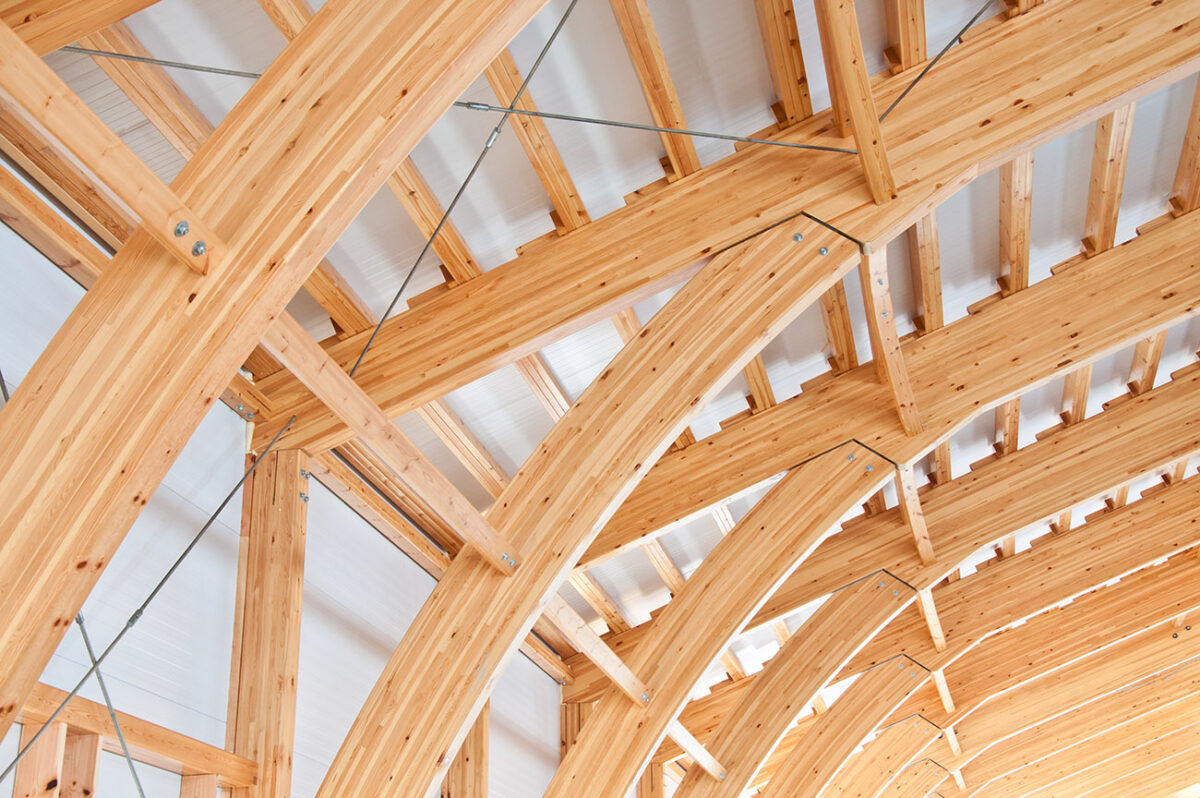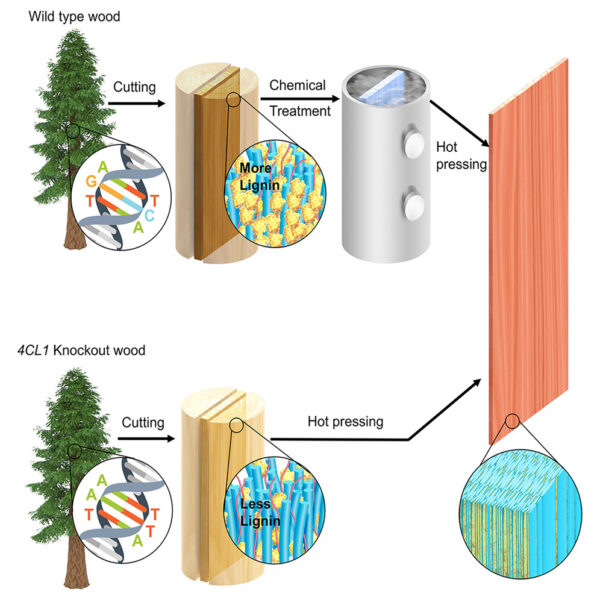Engineered Wood: Transforming The Building Industry

Natural wood, while abundant and low-cost, has limited mechanical properties for certain applications. As a result, there is growing interest in engineered wood, which offers enhanced strength and durability to meet modern structural demands.
Wood and Carbon Sequestration
The building industry, including building operations and materials, was responsible for the 37% of the total CO2 emissions. Consequently, finding carbon sequestration strategies rises as an important strategy for the sector.
You can also read: Lignin Polyurethanes: Byproduct to Solution
Lowering the carbon footprint of buildings requires the development of carbon-storage materials as well as novel designs that could enable multifunctional components to achieve widespread applications. By replacing conventional structural materials with hig-performance wood can reduce CO2 emissions and enhance carbon sequestration.
Engineered- Wood Development
Researchers modify wood at three levels, beginning with treatments that address swelling, shrinking, and degradation from moisture, fungi, or insects. For example, acetylation enhances wood’s durability, solving swelling and shrinking issues, but does not improve functionalizability or mechanical strength.
Over the past two decades, scientists have also carbonized wood at high temperatures to create highly conductive scaffolds. This process removes volatile components, leaving behind a conductive carbon structure, although it reduces porosity and weakens mechanical strength.
Most importantly, delignification has been reintroduced as a method to produce highly porous and robust wood scaffolds. This process removes lignin and hemicellulose while maintaining the cellulose skeleton, preserving wood’s natural honeycomb structure. The resulting scaffold can be functionalized or infiltrated with matrix systems, improving flexibility and mechanical strength while reducing density.
A High-Performance Alternative
In contrast, this study introduces genome-editing technology to reduce lignin in trees, enabling a more sustainable, chemical-free process. Researchers used the cytosine base editor nCas9-A3A/Y130F to target the 4CL1 gene in poplar. The 4CL1 knockout wood showed a 12.8% reduction in lignin content without significant growth changes. By soaking this wood in water and hot pressing, they achieved a tensile strength of 313.6 ± 6.4 MPa, 5.6 times higher than that of natural 4CL1 knockout wood and 1.6 times higher than that of densified wild-type wood. This result closely matched the strength of chemically treated wood (320.2 ± 3.5 MPa), demonstrating the potential of genetically modified wood as a high-performance alternative. Moreover, this approach significantly reduces environmental impact, making it a promising step toward sustainability in construction materials.

Densified 4CL1 knockout wood is as strong as densified wood from chemical treatment. Courtesy of Genome-edited trees for high-performance engineered wood.
Future Challenges
Currently, wood research focuses on top-down modification approaches rather than complex bottom-up methodologies. These methods preserve wood’s natural structure while being cost-effective, environmentally friendly, and time-efficient. Additionally, wood’s robust chemical structure offers broad application potential, from high-performance structural materials to advanced functional materials. The key to expanding engineered wood’s role in the construction industry lies in scaling up these chemical processes to accommodate more applications.
